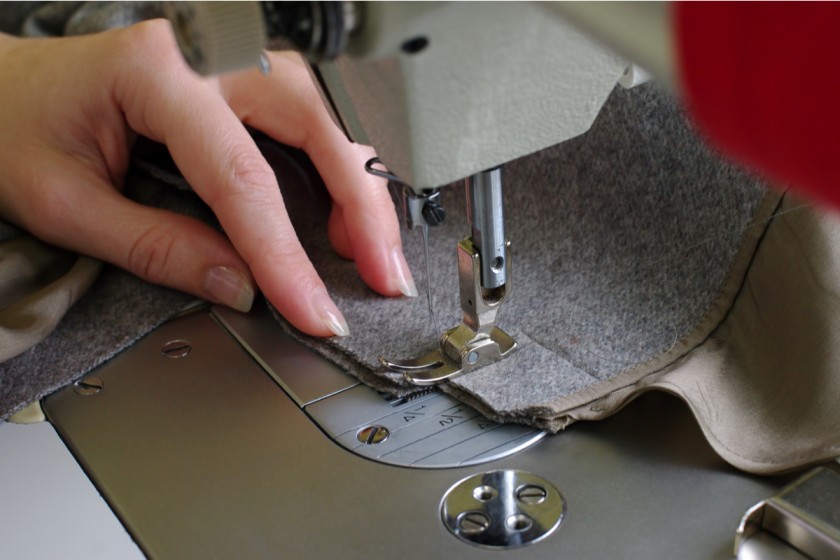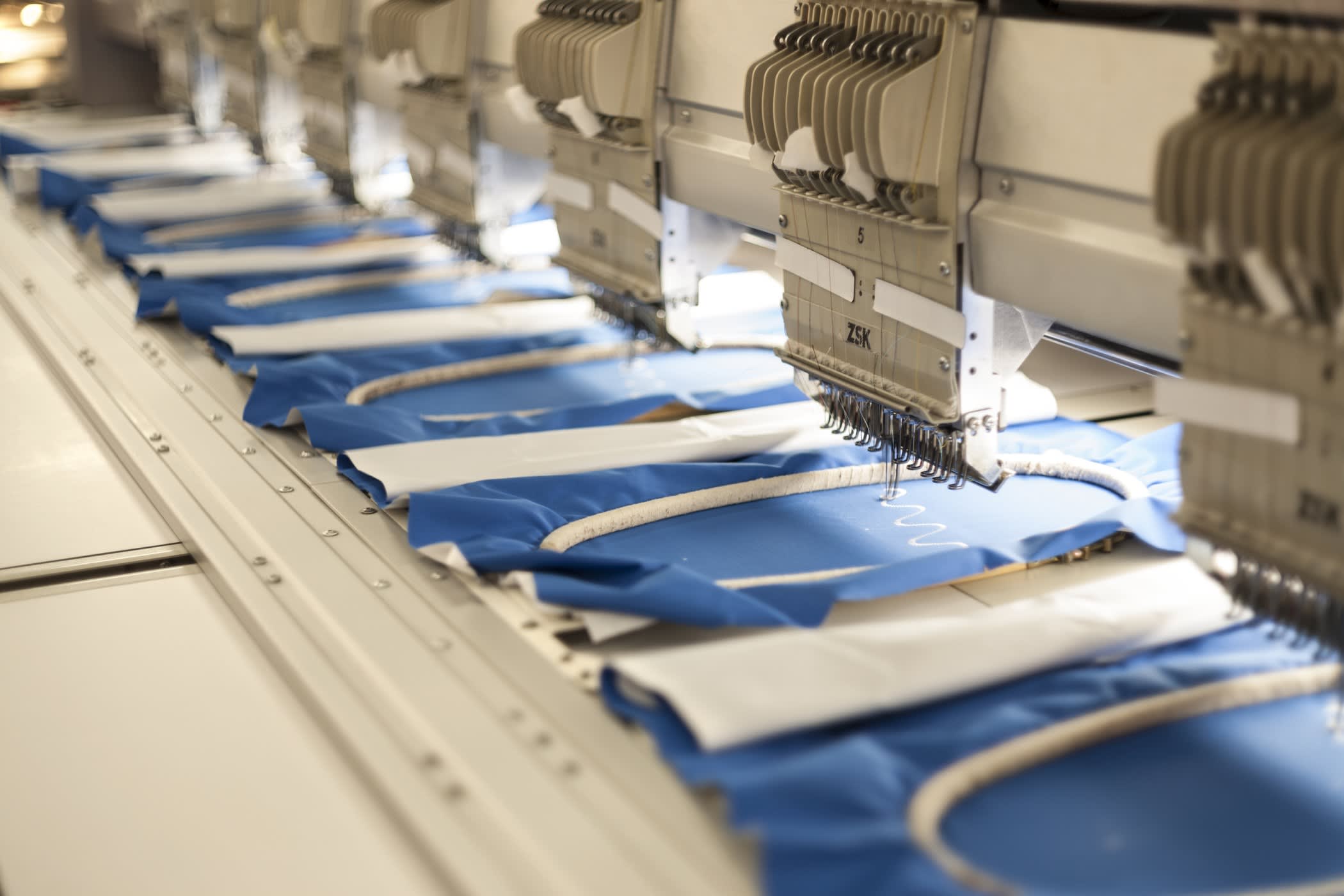Minimisation of the Detects Per Hundred Units (DHU %)



With the growing demand for quality garments, customers focus on fine finishing garments with almost no stitching defects. More than anything else, quality plays a predominant role in getting customer acceptance and scaling up the profit margin. Before the garments reach the market shelves, quality checkers analyse and detect the defects in the garments and separate the defective garments from the good quality pieces. Certain parameters are established, on which the percentage of defects is identified in the garment.
One of the crucial factors pivotal for quality checks is the percentage of DHU. The acronym stands for defects per hundred units and is an essential identifier of defects during the spotting and mending. Such defects occur both during the manufacturing of the fabric and the sewing or stitching of the garment. One of the best ways to reduce manufacturing and production of a defective garment is to adopt a process for minimising the defect per hundred units.
How to calculate the percentage of DHU
Customers, as well as brands, always accept fine products without defects. Defects are unacceptable as they result in non-conformance in various forms, such as poor fitting, broken buttons, fabric holes, bad stitching, hanging threads, broken or puckered seam, and improper garment shape. However, the first step towards minimising the defects in the garment is on the base level by minimising the defect per hundred units. DHU means the number of defects detected per 100 garments upon inspection in layman's terms.
It is calculated by using the formula:
Defects per hundred units = (Total defects found x 100)/Total garments inspected
For example, let's say a quality expert checked 300 garments in a day. If any defects are found in 25 garments, we can determine the percentage of DHU by applying the formula.
Defects per hundred units = (30 x 100)/300
= 30%
The total number of defects found is considered to measure the DHU, irrespective of the pieces of garments checked. Let's say a person might check X pieces for defects, and one garment might have multiple defects while a few garments might not have any defects. Hence, the total number of defects is identified, including multiple defects in a single garment.
Hence, two crucial things necessary for calculating the percentage of DHU are:
- Total number of pieces inspected
- Total defects found in the inspected pieces
Defects and how it impacts the garment industry

The higher the percentage of defects, the more the production and manufacturing unit of the garment. When many flaws are found after the shipment, it falls under the rejected piece and becomes a part of the operational wastage.
Defects impact the garment industry in the following ways:
- The increase in the rejection rate by the brand leads to wastage of the productivity and money invested in the overall raw material procurement, manufacturing operation, and shipment. It also implies the wastage of the garments because defective pieces go out in lot sales sold for meagre prices. The brands check even minute defects before putting the product on the market.
- Decrease in trust between the brands and apparel manufacturers with a continuous supply of defective pieces.
- If the defective piece ends up in the market by any chance, it reduces consumers' trust in the brand. When there is a high percentage of defects in the garment industry, it hampers smooth operation and production rate and necessitates following the same production procedure again to create fresh pieces.
- Rework on garment consignment or production is a waste of financial resources and manual resources.
How to Reduce the Defects Per Hundred Unit?
When it comes to minimising the defects, it is first important for the quality check experts to understand what degree or kind of non-confirmation is considered as a garment defect. Although fabric manufacturers play an essential role in supplying quality fabric, creating fine quality garments lies in the production and sewing department. Any manufacturer must have a standard protocol to detect the defect at the initial stage. It is ideal for identifying defects before sewing to reduce the negative impact of the procurement cost. Defects after sewing is a waste of manpower as it requires reworking to remove the imperfection and minimise or eliminate the defect. It is critical for quality control professionals to maintain strict operating conditions and supervise from time to time to minimise the defects.
Understanding the faults that affect DHU%
For maintaining standard productivity and reducing the defects, it is necessary first to understand the kind of defects that impact the percentage of DHU. Here are the types of defects to consider.
- Wrong stitching and fitting
- Machine cut
- Spots or stains from oil/dirt/colour
- Faulty button
- Lack of fine cutting
- Turnout stitch hole
Inspection from start to end

The errors or defects may be from one department and can seep through the manufacturing chain due to unchecked defects in the first production line. Hence, it is necessary to have quality checkpoints and protocols in each department to minimise the DHU%. Here are the quality checks that need to be streamlined across various departments involved in manufacturing the garment.
1. Fabric manufacture – The first and crucial point of the check must be in the procurement of the fabric. Unchecked defects in the fabric will transfer the defects across all the departments of garment production. Hence, quality experts must first perform a 100% inspection of the fabric and procure only high-quality fabrics. The fabric quality check helps detect defects related to weaving holes, printing or dyeing defects leading to leaching of colour, water crease marks, and variation of colour in the single fabric. Quality experts check the fabrics by rolling the fabric bundle on the fabric inspection machinery to analyse inconsistencies. This helps in locating as well as marking the defects on the fabric.
2. Trim and accessories – The fabrics are procured in bulk and trimmed using accessories for further tailored cuts. Once fabric inspection is completed, examining the trims and equipment used in the trimming process are done next. Any faults must be immediately considered, and an appropriate replacement is requested. This step is crucial as it helps check for the fabric's durability. The trim equipment and materials are checked to ensure no differential shrinkage in the fabric.
3. Cutting – A dedicated quality check team must inspect all the cuts and if they are done appropriately. This involves marker checking the fabric's cut parts, which further moves into the printing and designing department. It helps align the fabrics according to the designs, lines or stripes and eliminate errors during stitching.
4. Printing and Embroidery – Once the tailored cut pieces arrive and all of the cloth cuts or bundles are inspected, a quality check panel should be allotted for 100% inspection of the printing models and embroidery. Lack of consistency in printing the design or embroidery will increase the defects per hundred units.
5. Sewing department – This is where maximum defects occur due to faulty stitching or spillage of oil or any form of stain. There must be a stringent process to minimise DHU and reduce defects. It should involve an inline checkpoint, random checkpoints, 100% inspection during the end of the line and periodic audits of checked or inspected pieces. The construction or garment stitch is crucial based upon standard size measurement. This process involves checking for the quality of the stitching, quality of seams, labels, thickness when paddings or support are used etc.
6. Finishing department – Once all the checks are done and the garment is manufactured, the last check line should be for the final finishing inspection. After the garment is made, it is washed, and sufficient time is given to dry before packaging. Last-minute inspections are the ultimate way to minimise defective shipping pieces. The experts check for correct labelling, packaging, and quality of packed garments to inspect before forwarding them to the buyers.
It is found that when all the inspection steps are meticulously followed, it significantly reduces the defects per hundred units. As the defects are minimised, it reduces the rejection rate and hence reserves financial and manual resources. As the defects per hundred units reduce, it eventually improves the production quality, streamlines work efficiency, and builds a good reputation.
Conclusion
When there are higher defects per hundred units, it leads to a high rejection rate. DHU% is an integral factor that helps check for total defects per hundred garments, not limited to one defect in one garment. Although the maximum number of defects in the garment industry is caused by sewing, the quality inspection must start from start to end to minimise the flaws. A dedicated team must check for defects in every department, starting from fabric procurement to production of the finished product. Every garment manufacturer must have a team of expert and highly professional quality checkers to follow stringent quality check protocol, identify the defects, and formulate a way to reduce the defects. Random checks and audits keep the quality check department in line with their responsibility.
To stay updated on quality protocols and the latest updates from the fashion industry, check our latest blogs at Fashinza.



















